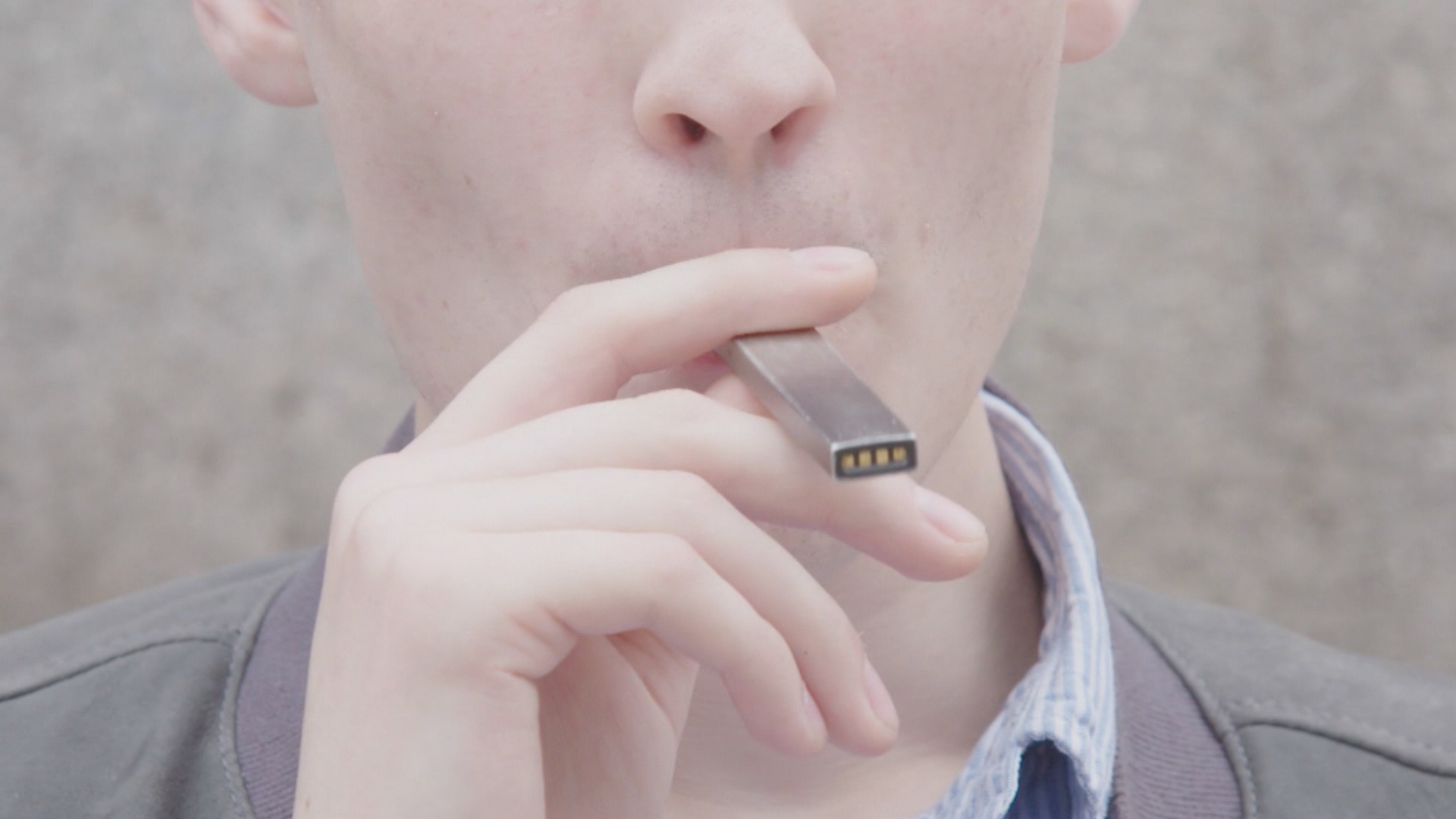Teen vaping in US hits lowest level in 10 years
(CNN) — Teens in the United States are far less likely to use e-cigarettes than they were a few years ago, but experts warn that any tobacco use among youth is unsafe — and now, the rise of nicotine pouches is a growing concern.
At the peak in 2019, more than 5 million students in middle and high school were using e-cigarettes. Now, about 1.6 million students – about 6% – currently use e-cigarettes, according to newly released survey data from the end of the first half of 2024. About half a million fewer students are now using e-cigarettes compared with last year — a nearly 25% drop in one year — bringing the rate down to the lowest it has been in a decade.
“While it’s encouraging to see these numbers currently remaining relatively low, the bottom line is that we are concerned about any youth appealing tobacco product,” Deirdre Lawrence Kittner, director of the Office on Smoking and Health at the US Centers for Disease Control and Prevention, said in a statement. “Our guard is up. We are aware of the reported growing sales trends for nicotine pouches and are closely monitoring the evolving tobacco product landscape for threats to public health, particularly when it comes to kids.”
Sales of nicotine pouches – small, dissolvable packets that are placed between the lip and gum – have been rising since 2016. Nearly half a million students in middle or high school, about 1.8%, use nicotine pouches, according to the survey data – up slightly from 1.5% last year. While this relatively low rate suggests that youth are not driving the popularity of the product, experts say it’s important to monitor and mitigate risks.
Tobacco use among youth is a “completely preventable health risk,” Brian King, director of the US Food and Drug Administration’s Center for Tobacco Products, said at a briefing. “We’re concerned with any tobacco product use among kids, and that includes nicotine pouches. So we’re committed to doing everything we can to reduce and prevent use of these products, as we would with other tobacco products.”
Estimates of e-cigarette and nicotine pouch use among youth are based on data from the National Youth Tobacco Survey, published Thursday by the CDC and the FDA. A nationally representative sample of students in sixth through twelfth grade were surveyed at the end of the 2023-24 school year, from January to May. Students were considered to be current users of e-cigarettes or nicotine patches if they reported using a product within the past 30 days.
All pouches and most e-cigarettes contain nicotine, which is highly addictive and can harm young people’s developing brains leading to problems with their memory and attention.
Of the students who said they use e-cigarettes, more than 1 in 4 say they use them every day, the new data shows. And of those who use nicotine pouches, more than 1 in 5 say they use them every day.
This daily use is a “strong indication” that teens are addicted to nicotine products, Yolonda C. Richardson, president and chief executive officer of the Campaign for Tobacco-Free Kids, said in a statement. The nonprofit advocacy group was not involved in the new report.
“Nicotine levels in e-cigarettes have skyrocketed in recent years, and the latest products contain as much nicotine as 20 packs of cigarettes or more, putting kids at risk of rapid and severe addiction,” Richardson said. “Despite this progress, youth e-cigarette use remains a serious public health problem in the United States, and the industry remains relentless in finding new ways to addict kids.”
The vast majority of students who use e-cigarettes or nicotine pouches favored flavored products, most commonly fruit for e-cigarettes and mint for nicotine pouches, the survey found.
These flavors and targeted marketing are among the many factors that influence youth tobacco product use, CDC’s Kittner said at the briefing.
“As a new school year begins, it’s important for educators and parents to talk to teens about vaping and all tobacco product use, help them understand the risks and empower them to practice healthy behaviors and practice positive coping skills,” she said. “Data show that most youth who are using tobacco products want to quit and there are resources available for both parents and youth.”
Health officials also emphasized the importance of a comprehensive approach to continue to bring rates down.
While the FDA has authorized the sale of 23 specific tobacco-flavored e-cigarette products and devices to date, several unauthorized e-cigarettes have emerged illegally on the market.
In recent years, the FDA has seized millions of dollars of unauthorized e-cigarettes and issued several warning letters to distributors and online retailers for selling unauthorized e-cigarette products that are popular with minors.
Focused enforcement actions have been taken against Elf Bar, which is not authorized for use in the US. This brand of vapes remain the most commonly used e-cigarettes among youth, but the new survey data shows that use has declined significantly: about 36% of youth who use e-cigarettes said they used Elf Bar in 2024, down from about 57% in 2023.
And in June, the FDA and the US Department of Justice announced the creation of a task force to fight the illegal sale and distribution of e-cigarettes.
“The continued decline in e-cigarette use among our nation’s youth is a monumental public health win,” King said in a statement. “This progress is a testament to the relentless efforts by the FDA, CDC and others, particularly over the past half decade. But we can’t rest on our laurels, as there’s still more work to do to further reduce youth e-cigarette use.”
CNN’s Jacqueline Howard and Jen Christensen contributed to this report.
